Red Okra plant: Red Okra is completely edible. The Red Okra is shaped like a torpedo and is two to five inches long. Offering a unique flavor and texture, the fresh flavor is between eggplant and asparagus. However, when cooked, the red color disappears and the pods turn green. Raw red Okra adds a touch of color. The plant 4 feet tall, torpedo-shaped fruit.
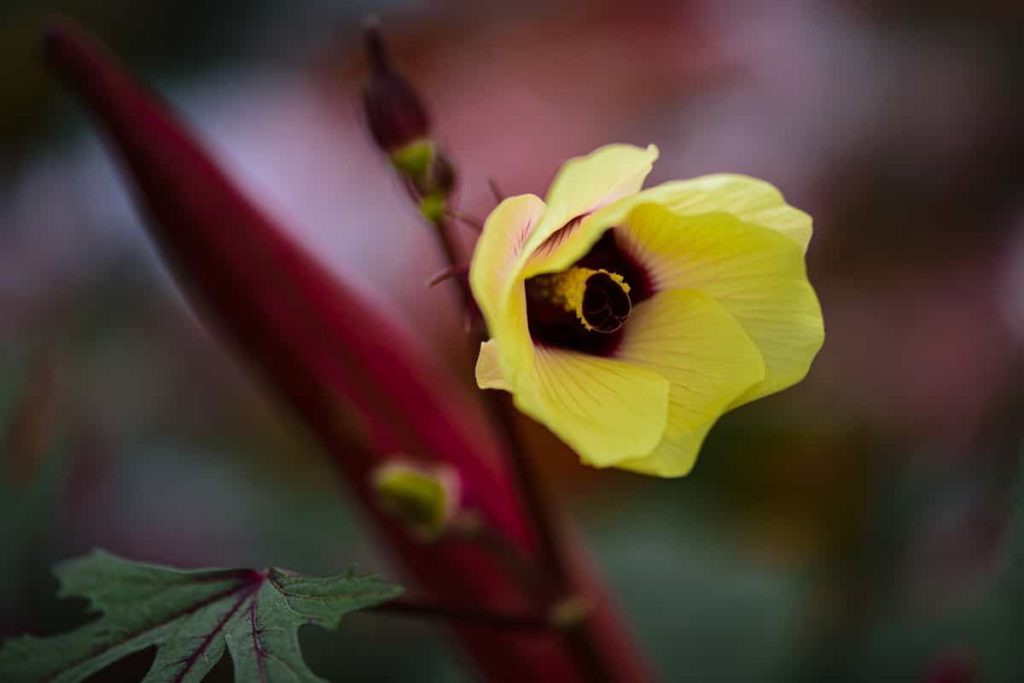
Red Okra plant height – 4 feet tall, 24 inches wide. Can grow taller in long-season areas.
Varieties of Red Okra
- Red Velvet
- Royal Burgundy
- Little Lucy
- Aunt Hettie’s Red
- Hill Country Red
Red Okra growing season – Late Spring – Summer
Okra grows in warm, humid climates. Leading Okra growing states in the United States are Texas, Georgia, California, and Florida.
What kind of Okra is red?
Okra is the only member of the Mallow family (which includes cotton, hibiscus, and hollyhock) producing edible fruit. In general, Okra beans are green and an important part of many southern foods. A relative newcomer, Red Burgundy Okra was raised by Leon Robbins at Clemson University and introduced in 1983, winning the All-America Selection in 1988. There are other red varieties of Okra, including ‘Red Velvet’ and Dwarf Red Okra “Little Lucy. ”
“Is red Okra edible?” Yes. Apart from the color, there is not much difference between red Okra and green Okra. Red Okra varieties are more nutritious than green Okra.
Growing Red Okra plants
Start plants in your area within 4-6 weeks from the last frost date or 2-4 weeks after the last expected frost. Okra seeds can be difficult to germinate. To make this process easier either gently peels off the outer coating with nail clippers or soak them overnight in water. Germination should be in 2-12 days. In rich soil, place the seeds 2 inches (5 cm) apart and about 3 inches (1.8 cm) deep.
In case you miss this: Okra Pests, Diseases, Symptoms, And Control Measures
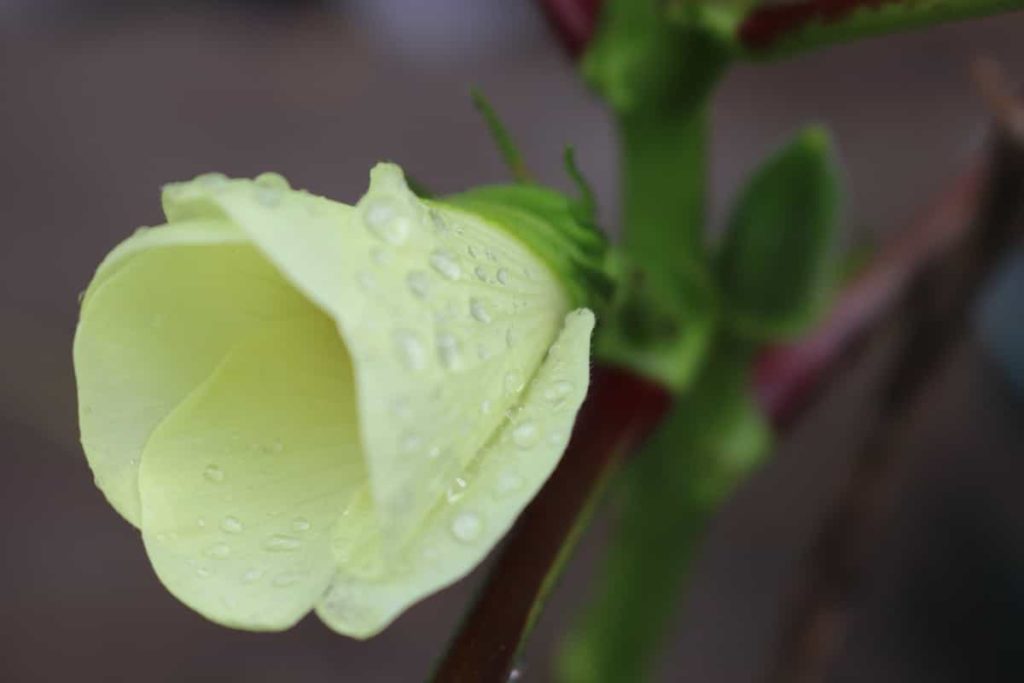
Make sure to amend the soil with plenty of compost as Okra is a heavy feeder. Transplant the seedlings when all frosts are gone and the soil is warm, and the ambient temperature is at least 20°C. Plant new plants at a distance of 6-8 inches (15-20 cm). The pods are formed in 55-60 days. Today, farmers of several states including Uttar Pradesh, Gujarat, Chhattisgarh are cultivating red ladyfinger.
Red Okra seed price
- Red Okra seeds (kasi lalima) cost 1 kg, Rs 3,000 per kilogram
- Hybrid red Okra seed Lali super cost is approximately Rs 7,000 per kilogram
US Nagar farmer grows Red Okra
A farmer from Sitarganj in Udham Singh Nagar district has succeeded in cultivating Red Okra on his farm using organic means. The Red Okra crop has a maturity time of about 50 to 65 days. It tastes exactly like a mixture of eggplant and asparagus. My method of cultivation is purely organic since people are more health-conscious. Farmers can make a good profit from this crop. Explaining the health benefits of Red Okra, it is a good source of Vitamin A, Folacin, Vitamin B, Magnesium, Potassium, and Calcium.
This type of vegetable fat is also free from cholesterol. He planted more than a hundred plants in about a quarter acre of farm. The market price of Red Okra will be a little more than Rs 100 per kg. Now, prepare seeds to sell to farmers so that Red Okra can be grown on a large scale. The crop is capable of yielding 50 quintals per acre and does not require any chemicals, pesticides, or fertilizers to grow it. In addition, the ripening time of the crop is short.
Market price Red Okra cost per kg
The price of Red Okra is approximately ₹90 – ₹108 per Kg
Red Okra income per acre
- Red Okra yield per acre – Red Okra production is estimated at 40 to 50 quintals per acre or 4000 to 5000Kg’s per acre
- Income per acre – Therefore, the farmer gets income per acre is approximately ₹3,60,000 to ₹4,50,000 (considered 4000 Kg’s yield per acre)
Green Okra Plant
Okra is an annual plant belonging to the Malvaceae family. Originally from Ethiopia, it is mainly grown in the tropics and sub-tropics. The ideal soil for Okra cultivation is sandy loam to loam soil which is rich in organic matter and has good drainage facilities. It can grow well in heavy soils if proper drainage is available.
In case you miss this: Organic Okra Farming (Bhindi/Lady Finger), Cultivation
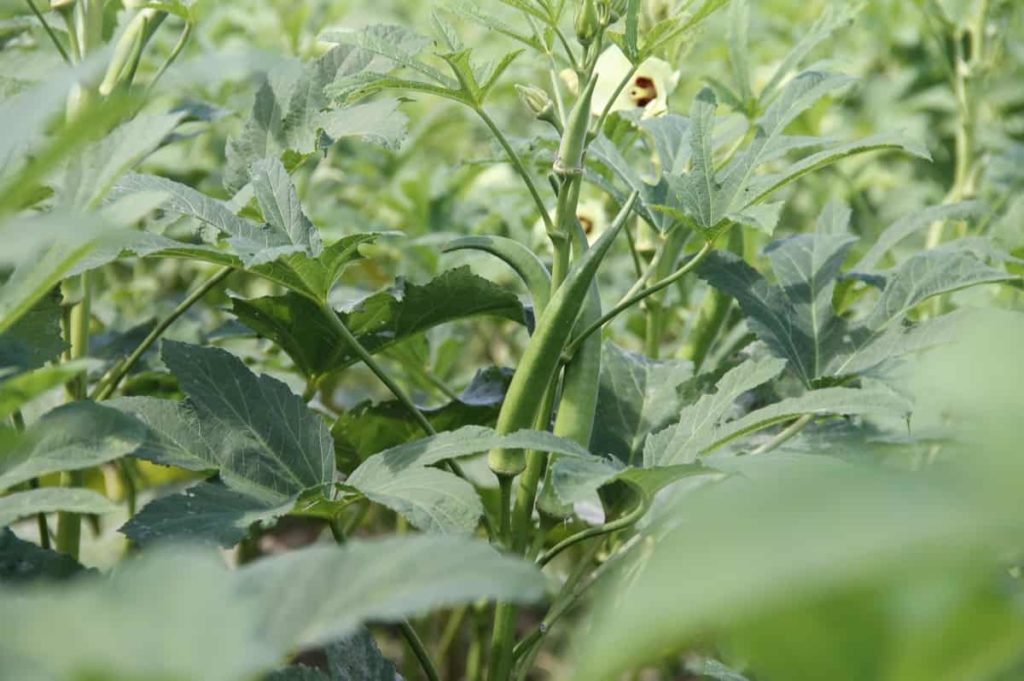
Soil pH should be 6.0 to 6.5. Do not cultivate crops in alkaline, saline soils even in soils with poor drainage capacity. Selection and preparation of planting site – As a warm-weather crop, Okra is grown in the full sun. Okra is adaptable and will thrive in most soils, although it performs best in well-drained soils that are rich in organic matter.
Green Okra seeds price – ₹800 to 1500 per kg
Green Okra varieties
- Punjab Padmini
- Punjab 7
- Punjab 8
- Punjab Suhavani
- Pusa Mahakali
- Parbhani Kranti
- Pusa Sawani
- Arka Anamika
- Pusa Makhmali
- Arka Anamika
- Parbhani Kranti
- Punjab e number 13
- Pusa Swani
- Punjab Padmini
- Radhika bhindi
- Namdhari bhindi
- Syngenta bhindi
- Avantika gold bhindi
When to plant Okra
You can start sowing seeds in full light in peat pots 3 to 4 weeks before the last date of spring. In warmer climates, you can start Okra directly in your garden 3 to 4 weeks before the spring frosts as long as you cover the plants with a cold frame or grow tunnel until the weather is completely warm. Make sure the lid is 2 to 3 feet long to allow the plants to grow. If you do not start your Okra plants early, wait until the stable, warm weather. You can plant Okra in the garden when the soil warms up to about 18 or 21°C – the warmer, the better.
In case you miss this: Okra Farming Cost, Profits (Bhindi) – A Project Report
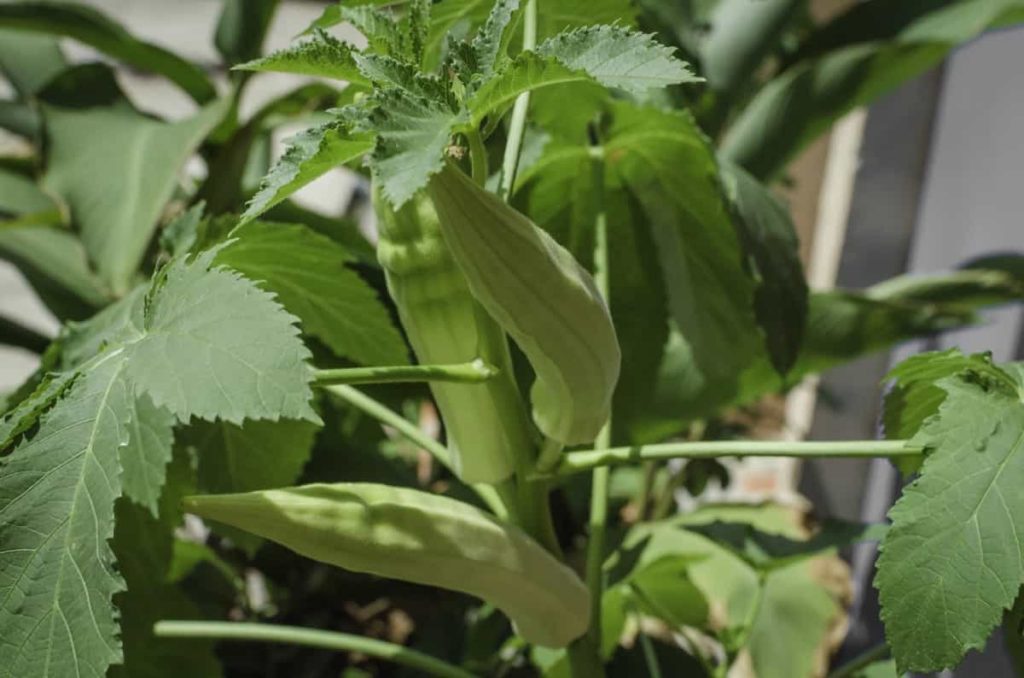
Conditions for growing Green Okra
Time of sowing – It is sown in the north during the rainy and spring seasons. In the rainy season, it is sown in June-July and for the spring season, it is sown in February-March.
Spacing – The spacing from row to row should be 45 cm and the distance from the plant to plant should be 15-20 cm.
Sowing depth – Sow the seeds at a depth of 1-2 cm.
Sowing method – The doubling method is used for sowing.
Weed control – Weeding is done to control the growth of weeds in Okra. Earthing up in rows during the rainy season. The first weeding is done 20-25 days after sowing and the second weeding is done 40-45 days after sowing. Use of Fluchoralin 48% @ 1 liter per acre or Pendimethalin @ 1ltr / acre or Alachlor@1.6Ltr/acre. For controlling weeds and pests, use intercropping and crop rotation.
You can cultivate with other plants like Maize and Onion. Research has shown that intercropping Okra with Onions significantly reduces leaf damage caused by Podagrica spp. Intercropping is very important in Okra cultivation because Okra is very sensitive to nematode damage. To prevent nematode populations on the farm, follow crop rotations using crops such as Maize, Sorghum, and other grass crops. Do not rotate Okra with crops that are also susceptible to nematodes like Sweet Potatoes and Squash.
Mulching – The mulching in the Okra crop has improved its growth and yield and increased moisture retention in the field. Usually, 200-gauge black LDPE sheets were used as mulched material. When the crop was mulched, irrigation methods did not affect the number of fruits bearing branches. It produces 51% more flowers and higher levels of fruit, which is an average of 88.1% when mulching the crop.
Mulching protects the plant from soil moisture stress as well as other physicochemical competition factors in the soil and helps maintain the internal water balance in the plant body. When the crop was mulched, weed growth was monitored, reducing the leakage of the freezer, and the loss of soil moisture through evaporation was prevented. All of these factors together may have contributed to higher yields, such as the number of fruit-bearing branches, the number of flowers, the number of fruits, the set of fruits, the weight of the fruit, and ultimately the final yield of the fruit.
In case you miss this: Integrated Farming System: Types, Advantages, Example
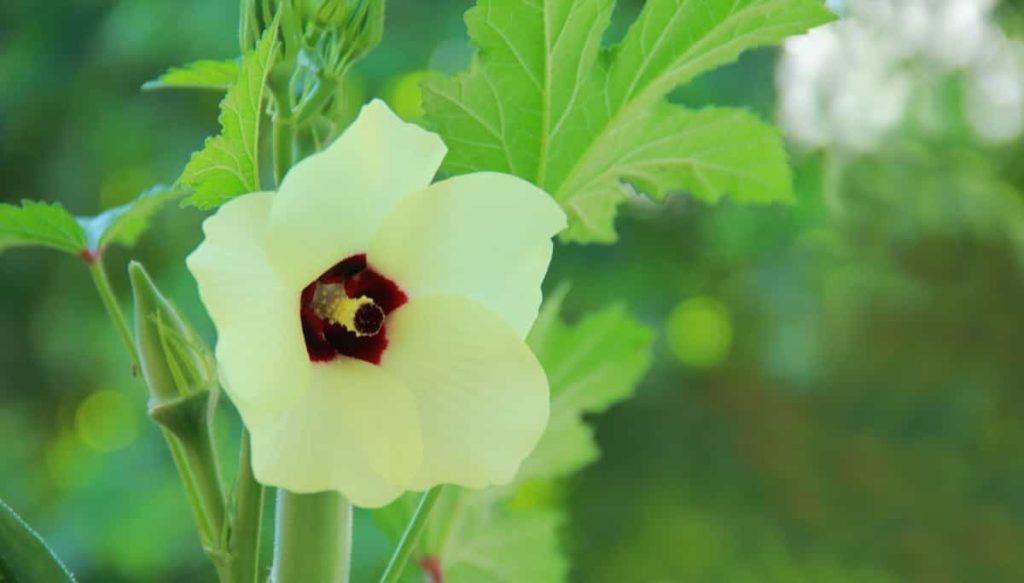
Irrigation – The summer crop should be irrigated before sowing to ensure good germination in case of poor soil moisture. Next irrigation is given after seed germination. Then the field is irrigated after 4 to 5 days in summer and 10 to 12 days after rains.
Pests/diseases – Aphids, Corn Earworms, Stinkbugs, and Fusarium Wilt
Harvesting – Okra ready to be harvested 60 to 70 days after sowing. Small and tender fruits should be harvested. Fruits should be harvested in the morning and evening. Cut the Okra when it is 2 to 3 inches long. Harvest it every other day ad cut the stem just above the cap with a knife. If the stem is too hard to cut, the bean is probably too old and should be discarded. Wear gloves and long sleeves when cutting, as most types are covered with small spines that irritate your skin unless you have a type of spineless.
Market price Red Okra per kg
The price of Okra is between ₹30 – ₹50 per Kg
Green Okra income per acre
- Yield per acre – Green Okra production is estimated at 27 to 48 quintals per acre or 2700 to 4800 kg per acre
- Income per acre – Therefore, the farmer gets income per acre is approximately ₹81,000 to ₹1,35,000 (considered 2700 kg yield per acre)
In case you miss this: Make Lakhs with Cotton Farming, Find Out Simple Facts and Techniques
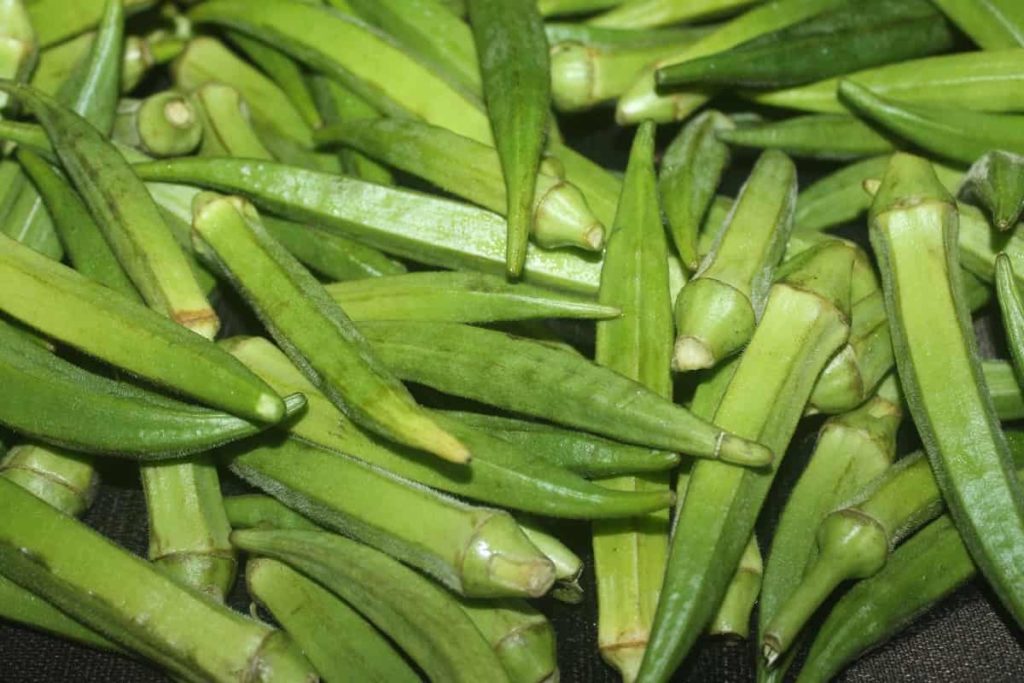
Red Okra vs Green Okra
Finally, Red Okra farmers get more income compared to Green Okra.
- Economical Aquaculture: A Guide to Low-Budget Fish Farming
- 15 Common Planting Errors That Can Doom Your Fruit Trees
- How to Make Houseplants Bushy: Effective Tips and Ideas
- Innovative Strategies for Boosting Coconut Pollination and Yield
- Pollination Strategies for Maximum Pumpkin Yield
- The Complete Guide to Chicken Fattening: Strategies for Maximum Growth
- Natural Solutions for Tulip Problems: 100% Effective Remedies for Leaf and Bulb-Related Issues
- Revolutionizing Citrus Preservation: Towards a Healthier, Greener Future
- Natural Solutions for Peony Leaf and Flower Problems: 100% Effective Remedies
- Maximizing Profits with Avocado Contract Farming in India: A Comprehensive Guide
- Natural Solutions for Hydrangea Problems: 100% Effective Remedies for Leaf and Flowers
- The Ultimate Guide to Choosing the Perfect Foliage Friend: Bringing Life Indoors
- From Sunlight to Sustainability: 15 Ways to Use Solar Technology in Agriculture
- The Ultimate Guide to Dong Tao Chicken: Exploring from History to Raising
- The Eco-Friendly Makeover: How to Convert Your Unused Swimming Pool into a Fish Pond
- Mastering the Art of Delaware Chicken Farming: Essentials for Healthy Backyard Flocks
- 20 Best Homemade Fertilizers for Money Plant: DIY Recipes and Application Methods
- How to Craft a Comprehensive Free-Range Chicken Farming Business Plan
- Brighten Your Flock: Raising Easter Egger Chickens for Beauty and Bounty
- How to Optimize Your Poultry Egg Farm Business Plan with These Strategies
- Subsidy for Spirulina Cultivation: How Indian Government Schemes Encouraging Spirulina Farmers
- Ultimate Guide to Raising Dominique Chickens: Breeding, Feeding, Egg-Production, and Care
- Mastering the Art of Raising Jersey Giant Chickens: Care, Feeding, and More
- Ultimate Guide to Raising Legbar Chickens: Breeding, Farming Practices, Diet, Egg-Production
- How to Raise Welsummer Chickens: A Comprehensive Guide for Beginners
- How to Protect Indoor Plants in Winter: A Comprehensive Guide
- Ultimate Guide to Grow Bag Gardening: Tips, Tricks, and Planting Ideas for Urban Gardeners
- Guide to Lotus Cultivation: How to Propagate, Plant, Grow, Care, Cost, and Profit
- Agriculture Drone Subsidy Scheme: Government Kisan Subsidy, License, and How to Apply Online
- Ultimate Guide to Raising Araucana Chickens: Breed Profile, Farming Economics, Diet, and Care
- Bringing Hydroponics to Classroom: Importance, Benefits of Learning for School Students
- Ultimate Guide to Raising Polish Chickens: Breed Profile, Farming Economics, Diet, and Care
- Ultimate Guide to Raising Australorp Chickens: Profile, Farming Economics, Egg Production, Diet, and Care
- Silkie Chicken Farming: Raising Practices, Varieties, Egg Production, Diet, and Care
- Sussex Chicken Farming: Raising Practices, Varieties, Egg Production, Diet and Care
- Homemade Feed Formulations for Livestock: Discover Cost-effective Starter to Finisher Feed Recipes